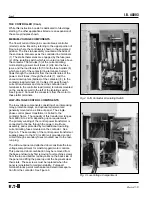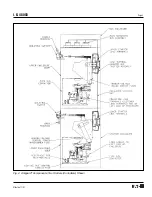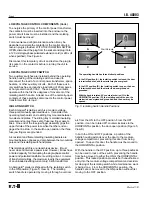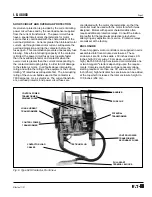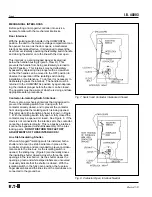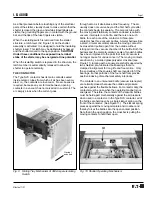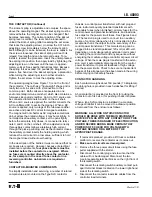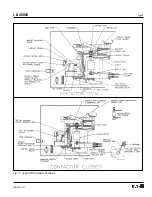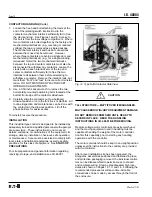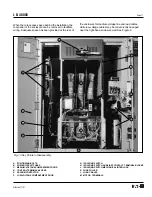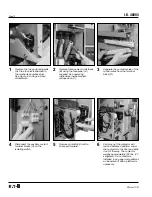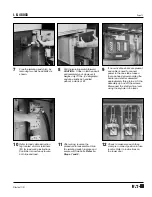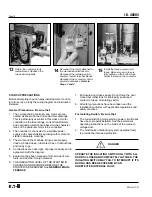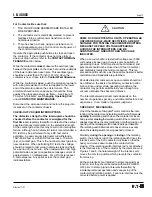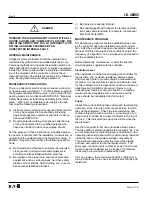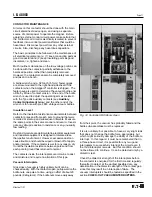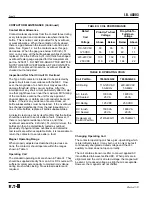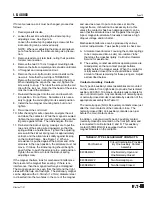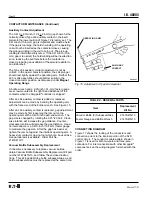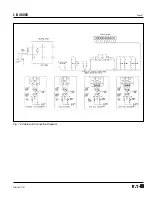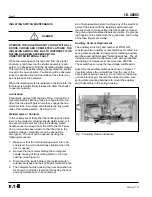
I.B. 48003
Page 7
Effective 11/97
As a final precaution before touching any of the electrical
parts of the starter, visually check to make certain that the
shutter is closed, the green and white striped labels are
visible, the grounding fingers are in contact with the ground
bar, and the tips of the fuse fingers are visible.
When the isolating switch is removed from the starter
structure, a latch lever (32, Figure 10) on the shutter
assembly is activated. It is designed to hold the insulating
shutter closed. This latch may be deliberately bypassed
and the shutter moved to the open position. CAUTION!
Under these conditions the exposed line terminal
stabs of the starter may be energized at line potential.
When the isolating switch is replaced in the structure, the
latch member is automatically released to allow the
shutter to operate normally.
THE CONTACTOR
The Type SJS contactor has its main contacts sealed
inside ceramic tubes from which all air has been evacu-
ated, i.e., the contacts are in vacuum. No arc boxes are
required, because any arc formed between opening
contacts in a vacuum has no ionized air to sustain it. The
arc simply stops when the current goes
through zero as it alternates at line frequency. The arc
usually does not survive beyond the first half cycle after
the contacts begin to separate. The ceramic tube with
the moving and stationary contacts enclosed is called a
vacuum interrupter or a bottle, and there is one such
bottle for each pole of the contactor. A three-pole
contactor has three vacuum bottles. A metal bellows (like
a small, circular accordion) allows the moving contact to
be closed and pulled open from the outside without
letting air into the vacuum chamber of the bottle. Both the
bellows and the metal-to-ceramic seals of modern bottles
have been improved to the point that loss of vacuum is
no longer cause for undue concern. The moving contacts
are driven by a molded glass polyester crossbar (see
Figure 11) rotating with a square steel shaft supported by
two shielded, pre-lubricated ball bearings that are
clamped in alignment for long life and free motion. Only
the end edges of the square shaft are rounded to fit the
bearings, so that portions of the four shaft flats provide
positive indexing of mechanical safety interlocks.
The contacts in an unmounted bottle (vacuum interrupter)
are normally-closed, because the outside air pressure
pushes against the flexible bellows. For contactor duty, the
contacts must be open when the operating magnet is not
energized. Therefore, the contacts of the vacuum bottles
must be held apart mechanically against the air pressure
when used in a contactor. In the Type SJS contactor, all of
the bottles are held open by a single kickout spring on the
front of the contactor. (See Figure 11.) The kickout spring
presses against the moving armature and crossbar and
thereby forces the bottles into the open contact position.
Note that in the open position, the crossbar is pulling the
moving contacts to hold them open.
Fig. 9
Sliding Tray Mechanism of 360 Ampere Isolating
Switch
Fig. 10 Shutter Operating Mechanism
Clevis at
end of rod


